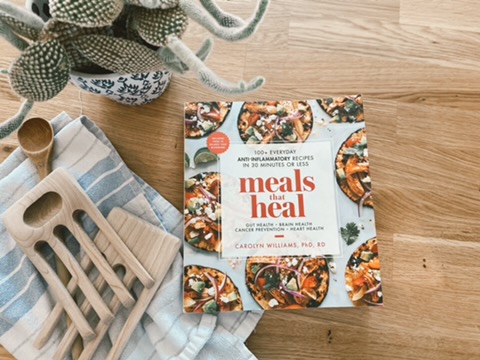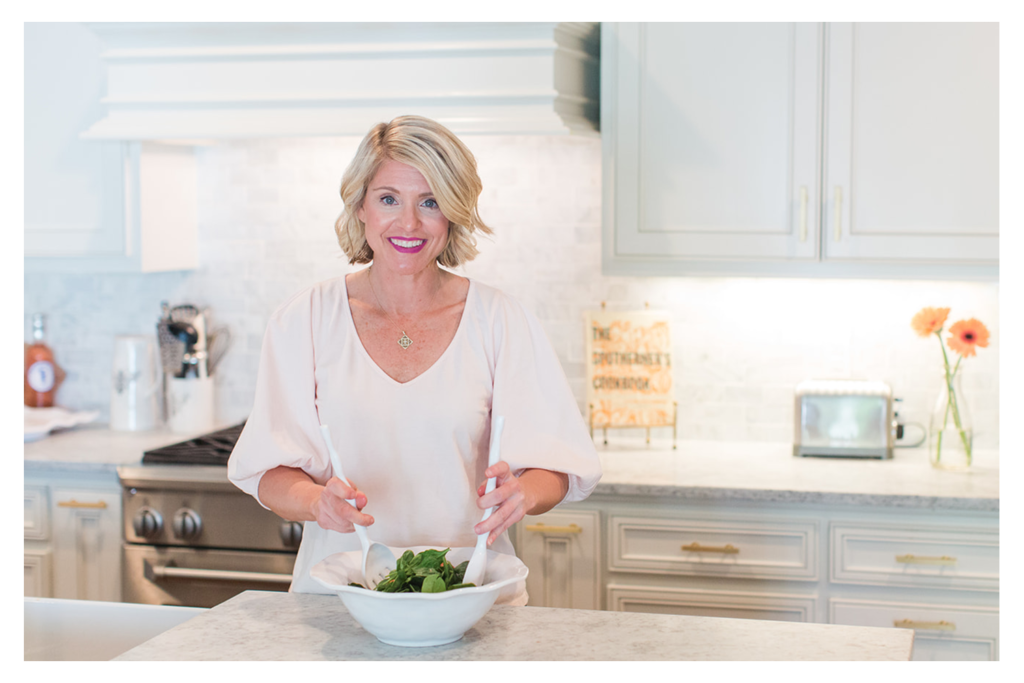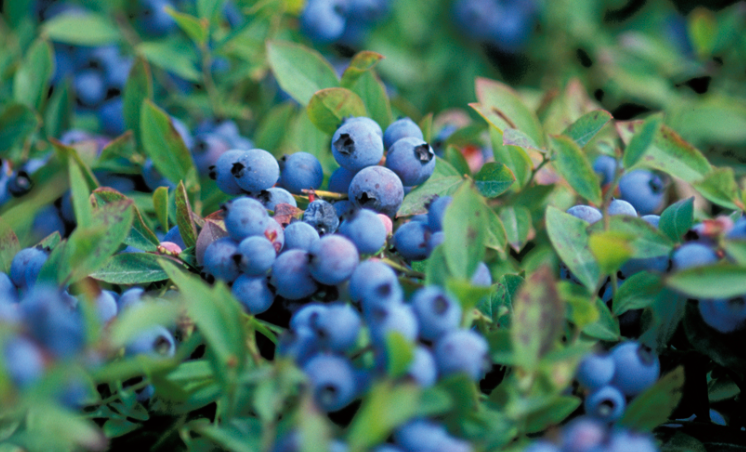Eating an Anti-Inflammatory Diet with Wild Blueberries
We hear it every day – on TV, in magazines, on social media, etc. – that we need to take care of our bodies at all ages. We’re told to exercise, eat well, visit the doctor regularly, and treat our bodies with kindness, but there are so many resources available that it can be overwhelming and challenging to know which information to follow. We find ourselves asking questions like: what are the best foods to fuel my body? What will help me not only look better but feel better too? In a recent interview with Carolyn Williams, PhD, RD, we discussed everything from foods that help prevent brain aging-related disease to what it means to follow an anti-inflammatory diet.
Carolyn, a bubbly, Southern belle, happily hopped on the phone with us to discuss her new cookbook, Meals That Heal: a cookbook dedicated to explaining the body’s relationship with anti-inflammatory foods and how eating the right things can help get to the root of many underlying conditions we face as a society. In between anecdotes about her book, she mentioned that she’d just whipped up a Wild Blueberry smoothie for her kids for breakfast, which of course brought a smile to our faces. We asked Carolyn to weigh in on why she featured Wild Blueberries as one of the best foods for an anti-inflammatory lifestyle.

Here’s what she shared.
Wild Blueberries: “The introduction to your cookbook explains how this book came to be – but I’m curious if you’ve always had an interest in the relationship between food and how the body works?”
Carolyn: “I’ve worked as a Registered Dietitian for many years, but it wasn’t until 2016 when I was asked to collaborate on a brain health project for Cooking Light that I truly started to understand the role certain foods may play in helping to prevent dementia and brain diseases like Alzheimer’s. I became more interested in antioxidants, omega-3 fatty acids, and what it means to embody and live a truly anti-inflammatory diet. Little did I know that I would eventually write a whole cookbook about it!”
Wild Blueberries: “That’s a perfect lead into talking about your most recent cookbook! Tell us a bit about it and your inspiration behind writing it.”
Carolyn: “After completing my brain health project with Cooking Light, I couldn’t get enough of this topic. I went deep and learned a lot about inflammation and its connection to gut health, brain health, cancer prevention, and heart health. Ironically, I also had a ton of writing assignments fall into my lap that talked about similar topics like multiple sclerosis, irritable bowel syndrome, diabetes, and more. It wasn’t until I was done with these writing assignments that I saw the common thread: every single condition was linked to inflammation in the body. And with the majority of people in the United States suffering from at least one, if not several, chronic diseases, I wondered why no one was talking about a way to address inflammation with healthy, whole foods. So, I set out to write a cookbook that does just that and that’s when Meals That Heal was born.”
As you thumb through the book, you’ll see that Carolyn took the time to not only outline the thought and care put into each curated, anti-inflammatory recipe, but also the “why” behind her choices. She makes it easy by starting with a how-to guide for living an anti-inflammatory lifestyle, noting the change in mindset that’s required to get started. It’s written in a way that makes you feel like an anti-inflammatory diet is not just for health nuts or foodies, but really for anyone.

Wild Blueberries: “What made you dedicate a specific page in the earlier part of the book to Wild Blueberries?”
Carolyn: “There is a lot of research that points to how vital consuming deeply pigmented berries are to a healthy brain and overall diet. Wild Blueberries are one of my favorite berries to incorporate into my meals. In fact, you’ll see Wild Blueberries incorporated into multiple recipes throughout my book – from the berry green smoothie, to the yogurt-granola breakfast bark, a personal favorite of mine. I mention in the cookbook that blueberries are a superfood and I tend to choose wild over cultivated blueberries due to their higher concentration of nutrients and antioxidants.”
Wild Blueberries: “From your research and findings, can you share some specific health conditions that eating Wild Blueberries can help with at all ages?”
Carolyn: “I note in my book that research on Wild Blueberries has shown a connection to lowering blood pressure, improving insulin sensitivity, and increasing memory and concentration for kids. The high levels of antioxidants and phytochemicals deliver a lot of nutrients in a tiny berry.”
Wild Blueberries: “From your perspective, why are Wild Blueberries a good and easy choice for families to consider for recipes and morning meals?”
Carolyn: “Wild Blueberries are an easy addition to breakfast foods that many people already make for their families. You can find them year-round in the frozen fruits section of your grocery store – just make sure there’s the word ‘Wild’ on the packaging before you buy. I stir them into muffin, bread, or pancake batter, or toss them on top of oatmeal or yogurt. If we’re on our way out the door, I’ll throw them in a smoothie for my two kids to enjoy. They’re a perfect, easy fit for an anti-inflammatory diet and they taste good too, so what’s not to love about Wild?””
Learn more about Carolyn Williams by visiting her website and order a copy of her cookbook, Meals that Heal to get started on your anti-inflammatory journey today.

